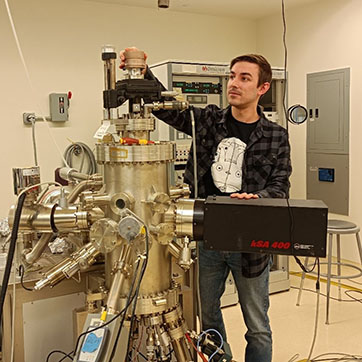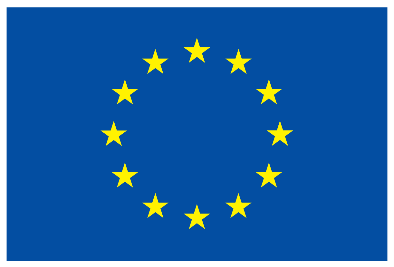David Bugallo Ferrón
Margarita Salas Fellow & Marie Curie Fellow
Universidade de Santiago de Compostela, Spain
 David Bugello in the Films and Heterostructures Group lab
David Bugello in the Films and Heterostructures Group lab
David began his work at Drexel University as a Margarita Salas Fellow funded by the Spanish Ministry of Universities, and was also recently granted a Marie Curie Global Fellowship, awarded from the European Research Council. The Marie Curie fellowship is one of the most competitive and prestigious research and innovation fellowships in the EU.
Please describe your research
My work involves the synthesis and characterization of new materials based on germanium with novel structures. These materials will be synthesized as thin films by molecular beam epitaxy, guided through a computational approach using density functional theory and thermodynamic calculations. The materials studied exhibit (or have been proposed to exhibit) interesting electrical properties such as Weyl semimetals and narrow bandgap semiconductors, while being formed of non-toxic elements.
These materials will bring new possibilities for the future. Weyl semimetals have only recently been observed (2015) and the new physics present in them has already been proposed for applications such as catalysts for the hydrogen evolution reaction. Narrow bandgap semiconductors are widely used in applications like sensors, detectors and imaging. However, currently used narrow bandgap semiconductors are usually comprised of toxic or ecologically unfriendly elements such as cadmium mercury telluride, and therefore alternatives are needed.
What brought you to Drexel to work on your research?
The excellent research in Materials science from the Department and the wide array of techniques available, as well as the great and enthusiast atmosphere I could already feel from Europe through emails!
Tell us about something in your research work that you are particularly proud of/excited about.
I am really excited about combining experimental and theoretical aspects of the research to bring new possibilities to life, bringing nontoxic alternatives to widely used materials and bringing new possibilities to the field with interesting physics that has just started to be studied. Also working with material structures that have not seen that much interest as of now is so interesting for me, as I hope it will help broaden the array of materials that can be used in the future.

Funded by the European Union. Views and opinions expressed are however those of the author(s) only and do not necessarily reflect those of the European Union. Neither the European Union nor the granting authority can be held responsible for them.